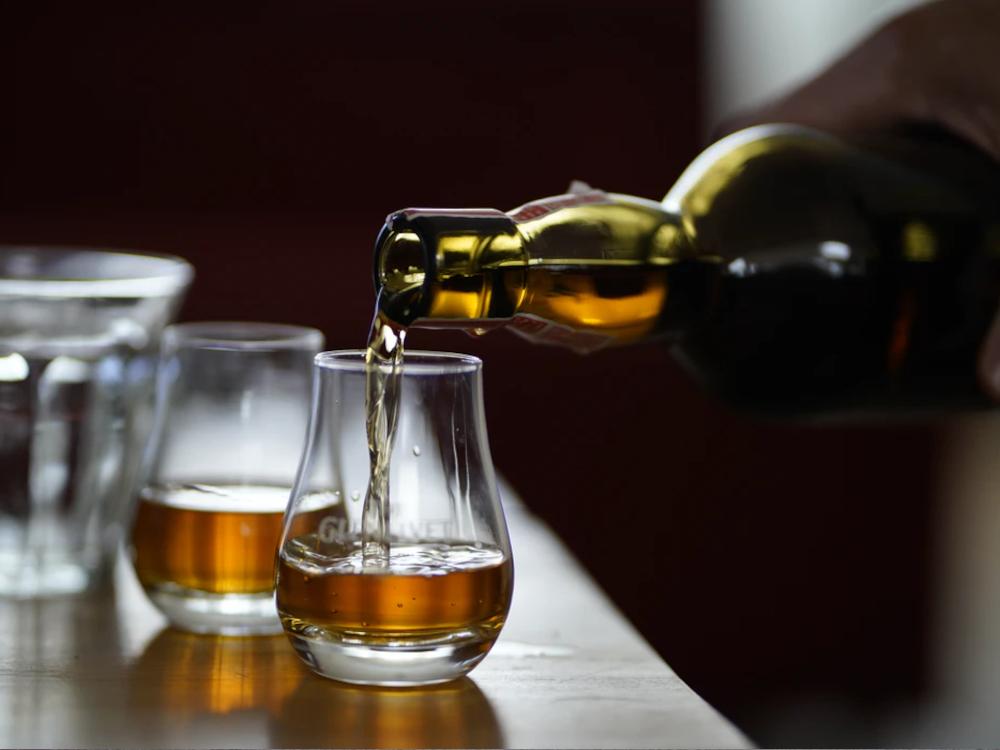TLDR
What is a whisky neck pour
A neck pour refers the very first whisky poured from a bottle. This first pour from the bottle is held by many to be qualitatively different to the rest of the bottle as it has experienced far less oxidisation than subsequent pours will. In truth while oxygen has a role to play here, this role is often over stated and other considerations are not given their full weight.The Long Read
Published July 10, 2021
Contents

The concept of oxidisation
Unlike wine which can continues to mature within a bottle* whisky maturation is entirely cask based meaning that no further maturation will take place once a whisky is bottled. This does not mean however that a whisky will remain the same indefinately even if properly stored. Once opened the effect of additive and reductive oxidisation may improve a whisky for a time, though will ultimately destroy a whisky to such a degree that oxidisation must be guarded against.
The transformative power of oxegen is reasonably well understood, and has its place within alcohol production, beyond the simple fact that oxygen is needed to allow healthy yeast growth oxidative winemaking relies upon the transformatory power of H2O, as does whisky maturation.
*While it’s true that wine can be aged most wines, and virtually all sold for less than £30 are intended to be drunk within 5 years. Longer term storage generally beind reductive
Is the concept of neck pour real?
Yes but it is often heavily overstated. While there is no doubt that oxygen can transform a small pour of whisky in a glass over a matter of hours it will take considerably longer to transform a bottle of whisky. A half empty bottle that is regularly poured will transform far faster than a bottle left closed for 6 months after only the first pour. However this is down to a number of factors, not all of which are oxidisation:
Air escape
The escape of air from the headspace in the bottle will transform a whisky over time. As anyone who has ever nosed a bottle, or glass of whisky can tell you alcohol is volatile and its flavour compounds will drift to the top of the container. Every single time a whisky is poured some of these flavours will be lost, and in ever increasing amounts as the bottles liquid recedes being replaced by more air.
Evaporation of alcohol & temperature swings
One of the most obvious transformations is the evaporation of alcohol, while within a sealed container this will be minimum it is not zero. Over a long enough timeline evaporation rates determined by humidity and aided by temperature swings will bring about a change in flavour as more volatile gasses are lost.
Whisky does not tolerate major fluctuations in temperature well. Therefore it is important to ensure a low and constant temperature. A temperature of around 15 degrees Celsius is consider ideal. With less evaporation, the shelf life of the whisky will be extended.
Exposure to direct sunlight
Whisky reacts to direct contact with sunlight. A bright room will not immediately lead to problems however, if you leave a bottle of whisky on the windowsill in direct sunlight, this will quickly have a deleterious effect on both taste and colour. Over a longer timeframe this will cause problems for bottles that are not properly stored as well.
The placebo effect
When people are told a whisky has a particular tasting note they will often go looking and find that note. The power of suggestion being sufficient to trick us into finding things that are simply not there. Likewise when a whisky drinker comes to learn about the transformative impacts of water, or oxygen or spirit caramel. Unfortunately once learned these things are seldom unlearned and can spoil your enjoyment like John Bonham’s Ludwig Squeak King on Since I’ve Been Loving You. Unfortunately sometimes this effect is real, othertimes not, and often enough it’s simply in our heads!
Oxidisation and increased ratio of air-to-liquid
Ultimately while the neck pour phenomenon holds a grain of truth the simple fact is that the air to liquid ratio is of critical importance here. A smaller surface area means less oxidisation so the second pour from a bottle is likely to be virtually identical even after a matter of weeks and completely without difference if seperated by only a few hours. A half full bottle will oxidise far more than one halfway down the neck.
Previous

